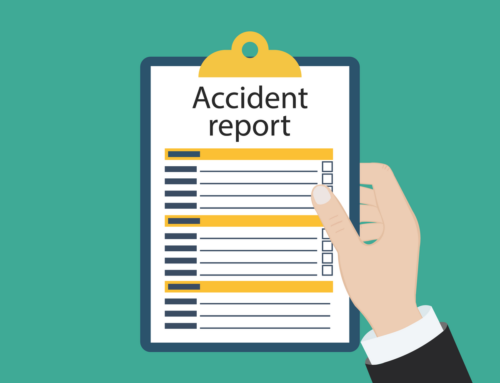Every two years, federal regulations require large quantity generators (LQGs) to submit a report regarding the nature, quantities and disposition of hazardous waste generated at their facility. Reports of hazardous waste generation activities are due to the authorized state agency or EPA regional office by March 1, 2018.
Who has to file a Biennial Report?
- A generator who is an LQG for at least one month and ships any hazardous waste offsite to a treatment, storage, disposal facility (TSDF)
- Any generator who is a large quantity generator for at least one month who treats, stores, or disposes of hazardous waste on site (requirement also applies to large quantity generators that receive hazardous waste from very small quantity generators)
- Facilities that recycle hazardous waste without storing prior to recycling the waste to prepare and submit a Biennial Report.
- Facilities that receive and partially reclaim hazardous wastes into a commodity like material.
An LQG must report all hazardous waste that is generated during the calendar year, not just for the month(s) the generator was an LQG. Exports of hazardous waste to foreign countries are not required to be reported on the Biennial Report form.
Addendums to the Site Identification Form
The Site ID Form must be filled out to report regulated waste activities as of the date the Biennial Report is submitted. The following addendums to the Site ID Form have been added or revised:
- Notification of Hazardous Secondary Material (HSM) Activity
- LQG Consolidation of VSQGs Hazardous Wastes
- Episodic Generator
See EPA’s Biennial Hazardous Waste Report website for more information and links to the report form and instructions.
Biennial Report Frequently Asked Questions (FAQs)
- What is the biennial report and who must submit it?
Section 3002(a)(6) of the Resource Conservation and Recovery Act (RCRA) requires EPA to develop a program for hazardous waste generators to report the nature, quantities, and disposition of hazardous waste generated at least once every two years. In addition, section 3004(a)(2) of RCRA requires treatment, storage and disposal facilities (TSDFs) to submit a report on the wastes that they receive from off-site. The biennial Hazardous Waste Report (also known as the “Biennial Report”) was implemented in 1985 to comply with these requirements.
The Biennial Report form (8700-13A/B) must be submitted to the authorized state agency or the EPA Regional Office by March 1st of every even-numbered year. The form includes information such as the facility’s EPA identification (ID) number, the name and address of the facility, the quantity of hazardous waste sent to each TSDF in the U.S. and the manner in which the waste was treated during the previous year.
- My facility generated 2800 pounds of an oily sludge hazardous waste in one month during a clean out project. Do we have to file for the biennial report?
Yes. The federal regulations require that a site submit data to the Biennial Report if the site generates, in any calendar month, 1,000 kg (2,200 lbs.) of hazardous waste. You should contact your state for further information, as many states have additional requirements.
- Are all hazardous waste generators required to submit the RCRA Biennial Report?
No. Federal regulations only require large quantity generators to submit the Biennial Report (see §262.41). Small quantity generators (SQGs) and conditionally exempt small quantity generators (CESQGs) are not subject to the federal biennial reporting requirements, but such generators should consult with their implementing agencies since states can have more stringent reporting requirements.
- I am looking in the RCRA Biennial Report. How do I find what percentage of hazardous waste is generated by LQGs?
The National Biennial RCRA Hazardous Waste Report contains various statistics on the generation and management of hazardous waste. However, it does not contain any statistical information on the total percentage of hazardous waste generated by LQGs Federally, only LQGs are required to report. The first volume of the report does have percentages of waste generated by each state.
- Can generators keep Hazardous Waste Manifests and Biennial Report information off site?
Yes. Generators are not required to keep copies of manifests and biennial reports on site. Generators may keep copies at a corporate headquarters. However, the generator must be able to provide to EPA information on, or access to, these records.
- Who is required to sign the certification statement on the Site Identification (Site ID) Form?
The certification must be signed by owner(s), operator(s), or authorized representative(s) of a facility that is subject to the biennial reporting requirements. An “authorized representative” is a person responsible for the overall operation of the site (i.e., plant manager or superintendent, or a person of equal responsibility).
- What are the recordkeeping and notification requirements for conditionally exempt small quantity generators (CESQGs)?
Although CESQGs are not subject to recordkeeping, including notification, biennial reporting, and manifest requirements, they are still subject to limited generator waste management standards. 40 CFR §261.5 sets forth the special requirements for hazardous waste generated by the conditionally exempt small quantity generators. However, some states may require recordkeeping or collect data on CESQGs through inspections, so you should contact your state environmental agency for guidance on CESQG recordkeeping requirements.
- Where can the public access facility specific, hazardous waste management data?
EPA maintains hazardous waste management data in RCRAInfo, a comprehensive information system for RCRA hazardous waste data. The public and regulated community cannot directly access RCRAInfo. Instead, EPA periodically uploads specific hazardous waste management data from RCRAInfo into the Envirofacts Data Warehouse. The Envirofacts Web site provides access to several EPA databases, which provide information about environmental activities anywhere in the country. The Envirofacts Data Warehouse is available at the following URL: http://www3.epa.gov/enviro Hazardous Waste Query Form allows users to retrieve selected facility specific data from RCRAInfo. In addition, the Biennial Report (BR) Query Form allows users to retrieve hazardous waste management data submitted to EPA in Biennial Report submissions. Both queries enable a user to specify a facility using any combination of the facility name, geographic location, and/or standard industrial classification code. Additional facility specific data, beyond what is accessible in Envirofacts, is available by contacting the state implementing agency.
- In what form is hazardous waste generation data available?
For the latest information on hazardous waste generation in the United States, we recommend that you look at the most recent Biennial Report. All large quantity generators (LQGs) and treatment, storage, and disposal facilities (TSDFs) are required to submit information for the Biennial Report. In some cases, additional entities are required to submit information by their state implementing agency.
In addition, we recommend that you also contact your state’s implementing agency to acquire additional information on hazardous waste data.
- I am doing a site assessment. How can I locate my RCRA TSDFs that may be within the vicinity of a specific street address?
You may find facilities by conducting a geographic search on the RCRAInfo query form through the Envirofacts Data Warehouse. The National Biennial RCRA Hazardous Waste Report provides a list of reported RCRA sites in the United States, but only provides city and state for facilities that treated or disposed of hazardous waste.
To obtain information about a facility’s compliance record, individuals can contact the implementing agency where the facility is located.
- How does a hazardous waste generator, transporter, or treatment, storage, and disposal facility obtain an EPA identification (ID) number?
All persons who generate, transport, recycle, treat, store, or dispose of hazardous waste are required to notify EPA of their hazardous waste activities. EPA ID numbers are obtained by filing EPA Form 8700-12, Notification of Regulated Waste Activity, with the appropriate EPA Regional or authorized state RCRA office (Sections 262.12, 263.12, and 264.11).
- A generator has multiple structures within the same contiguous property. Is each structure required to have an individual EPA identification number?
No. For the purposes of generator notification and obtaining EPA identification numbers, and assuming the structures are on-site as defined in §260.10, one identification number is sufficient for all structures at the facility site. EPA identification numbers are issued to facilities on a by-site basis. There is no regulatory definition for the term “by-site”; however, it refers to where a hazardous waste is generated. For example, if a single company operates three laboratories on a single piece of property, all three laboratories may share one EPA ID number, and the waste from all three laboratories may be evaluated together. However, if the company operates three laboratories at three different locations that are not considered to be on contiguous property, each laboratory is viewed as a separate potential generator and is required to obtain an individual EPA ID.
Furthermore, when the laboratories or structures are owned by different people, the generator must obtain one identification number for each laboratory or structure even if the regulated activity is taking place on a contiguous piece of property.
- Do I need two ID numbers if I have two companies both at the same site?
Yes. A generator is any person, by site, whose act or process produces hazardous waste identified or whose act first causes a hazardous waste to become subject to regulation. Person means an individual, trust, firm, joint stock company, federal agency, corporation, partnership, association, state, municipality, commission, political subdivision of a state or any interstate body. The two distinct companies (i.e. persons) must each apply for a separate EPA ID number. Even though ID numbers usually are site-specific, where different people conduct different regulated activities on a site, a person conducting each regulated activity must obtain an EPA ID number.
- Can the Biennial Report form on the Internet be filled out electronically?
Yes. The form is available as a “fillable” pdf file and can be filled out electronically. The link to download the form is: http://www2.epa.gov/hwgenerators/2015-hazardous-waste-reportinstructions-and-form. Also, electronic reporting tools are available in some states.
- Should 10 Day Transfer facilities report all their waste from off-site facilities on the WR Form?
No. Because transfer facilities that generate no RCRA hazardous waste and keep all waste received onsite for under 10 days typically do not have a Treatment, Storage or Disposal Facility (TSDF) permit, they are considered neither a TSDF or a LQG so they are not required to file a Biennial Report by EPA. They are also not subject to the Facility Report requirement (264.75 or 265.75) because they don’t have a permit and are not managing waste in a way that requires one. However, you should check with your state to see if there are any different requirements.
- Does a large-quantity generator who generates a hazardous waste in December of a non-reporting year but ships it in January of the reporting year need to include that waste in their hazardous waste report?
Yes. The LQG who generates a hazardous waste in December of a non-reporting year but ships it in January of the reporting year needs to include that waste in their hazardous waste report.
- Can we extend the date filers are to submit their forms?
No. The Biennial Report forms are due March 1st of each even numbered year (see 40 CFR Part 262.41(a)). Contact your state for extensions to their deadline.
- Which states require annual reporting?
| EPA Region States that require annual reporting | |
| 1. | Maine, New Hampshire |
| 2. | New Jersey, New York |
| 3. | Delaware, District of Columbia |
| 4. | Georgia, Kentucky, Mississippi, South Carolina, Tennessee |
| 5. | Illinois, Indiana, Michigan, Minnesota, Wisconsin |
| 6. | Arkansas, Louisiana, Oklahoma, Texas |
| 7. | Kansas, Missouri |
| 8. | Montana |
| 9. | Arizona, California, Guam |
| 10. | Idaho, Oregon, Washington |








